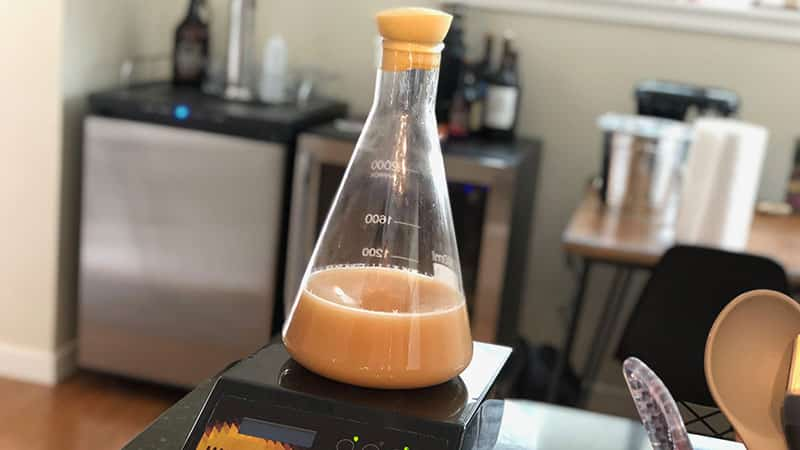Since you don't have a stir plate (yet), using a non-flat bottomed vessel is fine.
You're swirling, any container will work, glass preferred. Many use 1/2 gallon or 1 gallon clear "wine jugs" as found at your LHBS.
Just cap with some aluminum foil crimped loosely around the neck, and swirl whenever you (or a family member) can when passing by.
I recommend using one drop of Fermcap-S when you prepare your starter wort when you boil it.
It helps preventing boil overs in your boil pot,* and later on, foam overs in your starter vessel. I've lost quite a bit of fresh starter yeast to the countertop, before using Fermcap.
Use a stainless kitchen pot (with a well fitting lid) for making starter wort, not a (glass) flask.
It cools faster too in the sink or in a tub with cold water.
Making a yeast starter:
Use DME to water, at ratio of 1:10 by weight.
Such as 160 grams DME to 1.6 liter of water. That will give you 1.037 gravity starter wort. I would not put more than 1.6 liter in a 2 liter flask, jar, or jug, especially when not being stirred (or shaken).
- Bring the water to a boil, add your DME and a drop of Fermcap.
- Let it heat up to boiling again, and simmer for one minute. Turn heat off and place the sanitized lid on top of the pot.
- Transfer the pot to the cold water basin to chill. Replace the water when it got warm with cold.
- When cooled enough (~70-74F), pour wort and yeast into a well sanitized flask, jug, or jar. Cover with aluminum foil, crimped loosely around the neck.




![Craft A Brew - Safale S-04 Dry Yeast - Fermentis - English Ale Dry Yeast - For English and American Ales and Hard Apple Ciders - Ingredients for Home Brewing - Beer Making Supplies - [1 Pack]](https://m.media-amazon.com/images/I/41fVGNh6JfL._SL500_.jpg)






















































